When it comes to ensuring your indoor air quality is excellent, safe airduct cleaning plays an essential role. You might be surprised at the potential contaminants lurking in your airducts and the impact they can have on your health. By taking proactive steps to maintain clean airducts, you're not only safeguarding your well-being but also optimizing the efficiency of your HVAC system. But what exactly are these contaminants, and how can you effectively remove them from your airducts? Let's explore the world of safe airduct cleaning to uncover the answers you seek.
Importance of Clean Airducts
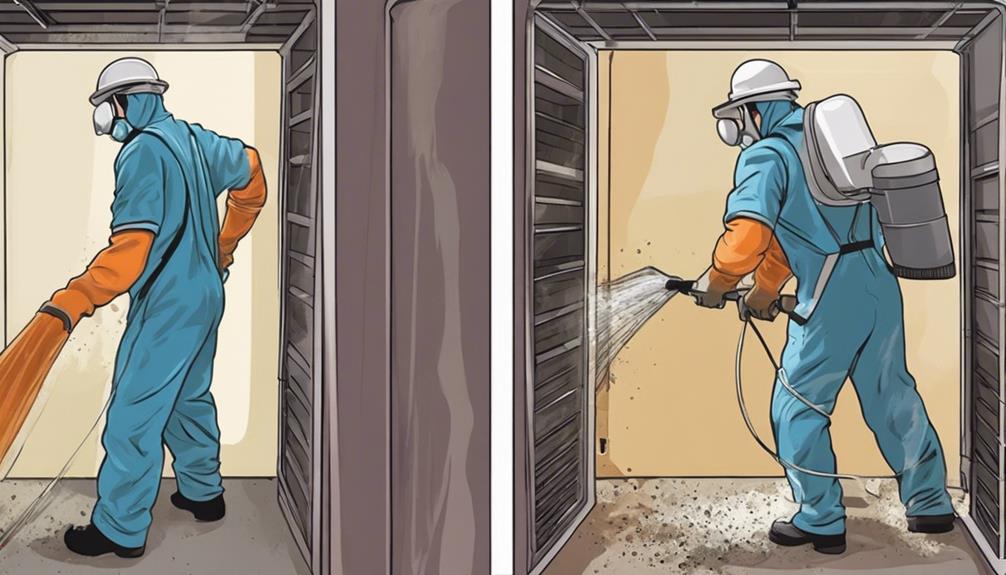
Maintaining clean airducts is essential for ensuring good indoor air quality in your home. Dirty airducts can harbor dust, mold, and other allergens that circulate throughout your living space, triggering indoor allergies and respiratory issues. By regularly cleaning your airducts, you can reduce the presence of these irritants, creating a healthier environment for you and your family.
In addition to improving indoor air quality, clean airducts also contribute to energy efficiency. When airducts are clogged with dust and debris, your HVAC system has to work harder to heat or cool your home, leading to increased energy consumption and higher utility bills. By keeping your airducts clean, you can help your HVAC system operate more efficiently, saving energy and money in the long run.
Health Benefits of Airduct Cleaning
Regular airduct cleaning not only improves indoor air quality but also offers significant health benefits for you and your family. By removing dust, allergens, and other contaminants from your airducts, you can experience allergy relief and improved respiratory health. Cleaner airducts promote better circulation of air, reducing the chances of respiratory issues and enhancing overall well-being. Additionally, clean airducts contribute to increased energy efficiency, as the HVAC system doesn't have to work as hard to heat or cool your home, leading to potential cost savings on energy bills.
—
| Health Benefits | Airduct Cleaning Offers |
|---|---|
| Allergy relief | Removes dust and allergens |
| Improved circulation | Enhances indoor air quality |
| Respiratory health | Reduces respiratory issues |
| Energy efficiency | Helps in saving on energy bills |
Common Airduct Contaminants
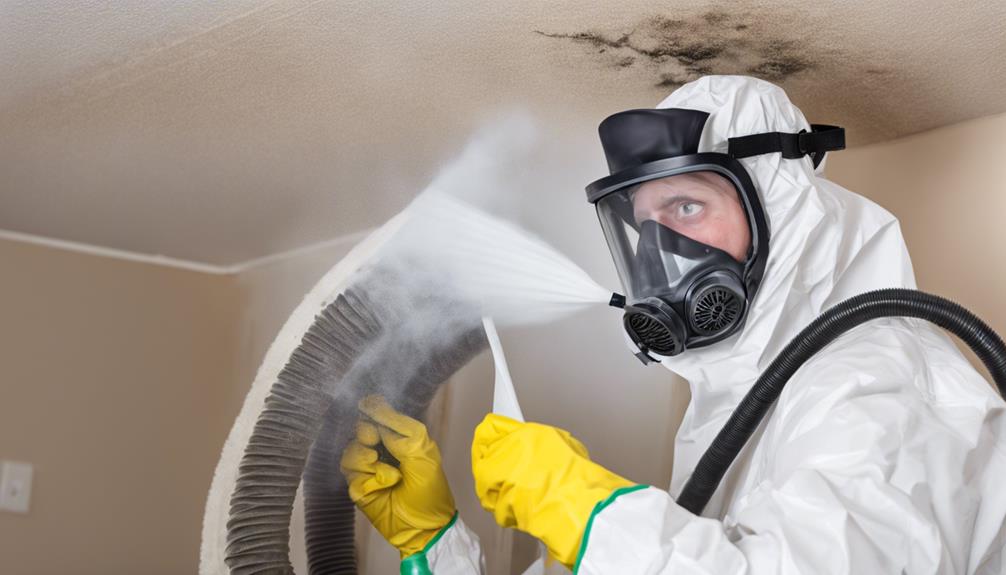
Cleaning your airducts is vital to remove common contaminants that can affect your indoor air quality. Mold spores, dust mites, pet dander, and pollen are some of the most prevalent pollutants that can accumulate in your air duct system.
Mold spores are microscopic particles that can lead to respiratory issues when inhaled, especially in individuals with allergies or asthma. Dust mites thrive in warm and humid environments, making air ducts an ideal breeding ground for them. Pet dander, consisting of tiny flecks of skin shed by pets, can trigger allergic reactions in sensitive individuals. Pollen, carried into your home through open doors and windows, can circulate through the air ducts, causing discomfort to those with pollen allergies.
These contaminants not only compromise your indoor air quality but can also exacerbate existing health conditions. Regular air duct cleaning is essential to eliminate these common pollutants and promote a healthier living environment for you and your family.
Signs Your Airducts Need Cleaning
When your airducts need cleaning, certain signs can indicate the accumulation of contaminants that may be affecting your indoor air quality. One noticeable sign is mold growth within the ductwork. If you detect a musty odor or see visible mold inside the ducts, it's important to address this promptly as mold spores can negatively impact your health.
Another indicator that your airducts may need cleaning is a decrease in energy efficiency. When dust and debris accumulate in the ducts, it restricts airflow, causing your HVAC system to work harder to maintain the desired temperature. This increased workload can lead to higher energy bills and reduced efficiency over time.
If you notice a spike in your energy costs without a corresponding increase in usage, it may be time to have your airducts inspected and cleaned to improve both your indoor air quality and system efficiency.
DIY Airduct Cleaning Tips
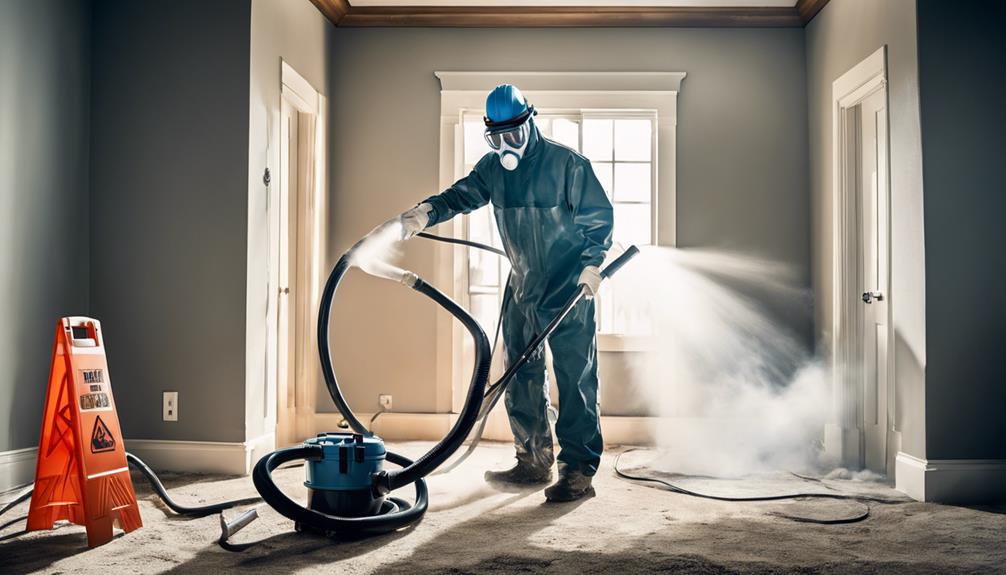
To effectively clean your air ducts on your own, begin by gathering the necessary tools and safety equipment. Proper cleaning techniques are essential for improving air quality and maximizing energy efficiency.
Here are some DIY air duct cleaning tips to help you save money and keep your home's air clean:
- Inspect your air ducts: Use a flashlight to check for dust, debris, or mold inside the ducts.
- Use the right tools: Purchase a brush with flexible bristles and a vacuum with a long hose attachment for effective cleaning.
- Seal duct openings: Before cleaning, make sure to seal off all vents and returns to prevent dust from spreading throughout your home.
Hiring Professional Airduct Cleaners
Consider hiring experts in airduct cleaning to guarantee a thorough and efficient process. Professional services offer a range of benefits that make them worth the investment.
When you hire professional airduct cleaners, you can expect a meticulous cleaning that reaches deep into the ductwork, removing dust, debris, and allergens that DIY methods may miss. These experts have specialized tools and equipment to effectively clean your airducts without causing damage.
Professional services also provide a level of expertise that assures the job is done correctly and to industry standards. By hiring professionals, you can have peace of mind knowing that your indoor air quality will be improved, potentially reducing allergies and respiratory issues.
Additionally, professional airduct cleaners can identify any underlying issues with your HVAC system that may need attention.
Safe Cleaning Products for Airducts
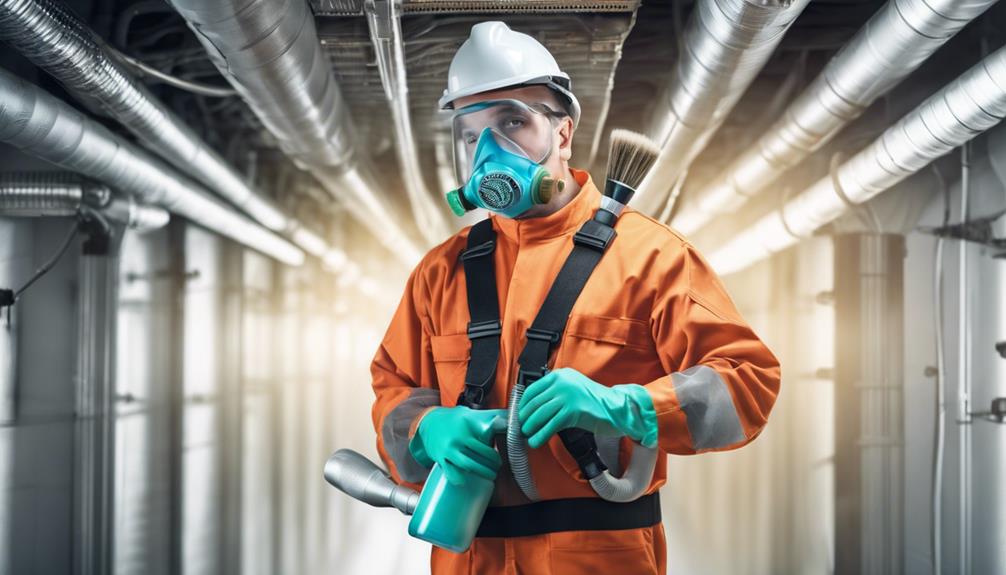
For safe and effective airduct cleaning, it's important to use cleaning products that are specifically designed for airduct systems. When choosing products to clean your airducts, opt for eco-friendly solutions and non-toxic options. These will help guarantee the air circulating in your home remains clean and healthy for you and your family.
Here are some key points to keep in mind when selecting cleaning products:
- Eco-Friendly Solutions: Look for products that are environmentally friendly and biodegradable. These options aren't only safer for the environment but also for the air quality in your home.
- Non-Toxic Options: Choose cleaning products that are free from harsh chemicals and toxins. Non-toxic cleaners are gentler on your airduct system and pose less risk to your health.
- Scent-Free Formulas: Consider using scent-free or naturally scented products to avoid introducing artificial fragrances into your home's air supply, which can be irritating to some individuals.
Frequency of Airduct Cleaning
Regular airduct cleaning is essential in maintaining excellent air quality in your home. Establishing a cleaning schedule for your airducts can greatly benefit both your health and the efficiency of your HVAC system.
It's recommended to have your airducts professionally cleaned every 3 to 5 years, depending on factors such as the presence of pets, smokers in the household, or any respiratory issues among family members.
Adhering to a regular cleaning routine helps in removing accumulated dust, dirt, allergens, and mold from your airducts, preventing them from circulating in the air you breathe. This can lead to a significant improvement in indoor air quality, reducing allergic reactions and respiratory problems.
Additionally, clean airducts promote better airflow, which can enhance the performance and lifespan of your HVAC system while also lowering energy costs. By investing in the regular maintenance of your airducts, you're investing in the health and comfort of your home.
Preventing Airduct Contamination
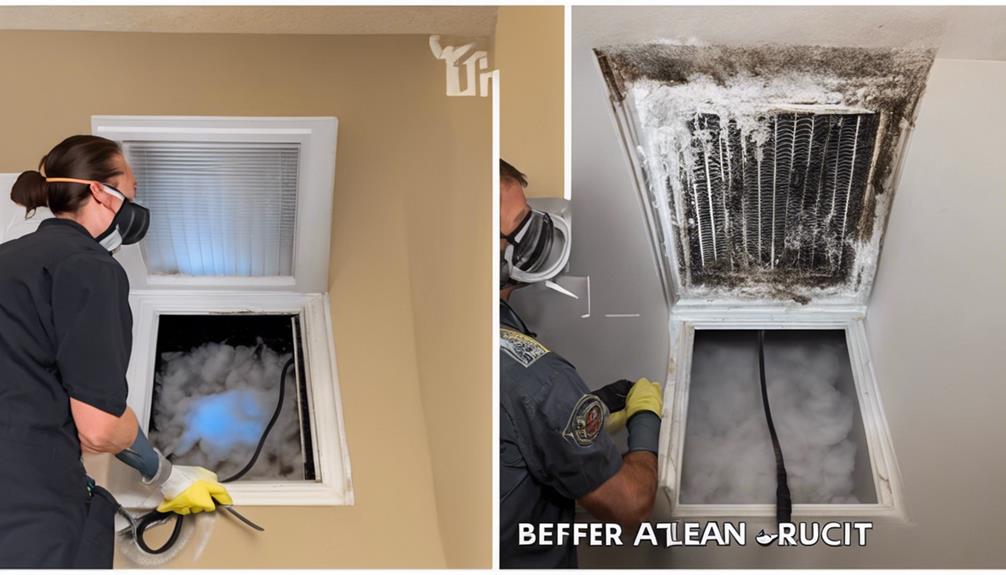
To prevent contamination of your airducts, make sure proper sealing of all duct connections throughout your home. Guaranteeing a tight seal will prevent dust and other pollutants from entering the duct system and circulating in your indoor air.
Additionally, implementing the following practices can help maintain clean and healthy airducts:
- Preventing mold growth: Keep your airducts dry and well-ventilated to prevent mold from developing, which can't only contaminate the air but also pose health risks, especially for those with indoor allergies.
- Controlling dust: Regularly clean and dust your home to minimize the amount of dust that can accumulate in the airducts, improving the overall air quality and reducing the risk of respiratory issues.
- Improving airflow: Ensure that your airducts are free from obstructions and properly sized to allow for efficient airflow throughout your home, promoting better ventilation and air circulation.
Maintaining Clean Airducts
Maintain the cleanliness of your airducts by following these maintenance tips. Regular maintenance is essential for ensuring good air quality in your home and reducing the risk of allergies caused by dust and pollutants circulating through the ductwork.
To keep your airducts clean and your home free from contaminants, follow these simple maintenance practices:
| Maintenance Tip | Description | Frequency |
|---|---|---|
| Regular Filter Changes | Replace air filters every 1-3 months to trap dust | Every 1-3 months |
| Duct Inspection | Check for leaks or debris in ducts for efficient airflow | Annually |
| Professional Cleaning | Schedule a professional airduct cleaning every 3-5 years | Every 3-5 years |
Conclusion
To sum up, maintaining clean airducts is crucial for promoting good indoor air quality and overall health. By regularly cleaning and inspecting your airducts, you can reduce the risk of allergens and contaminants circulating throughout your home.
Remember to replace air filters regularly and use safe cleaning products to guarantee a healthy living environment for you and your family. Keep up with maintenance to enjoy clean, fresh air all year round.